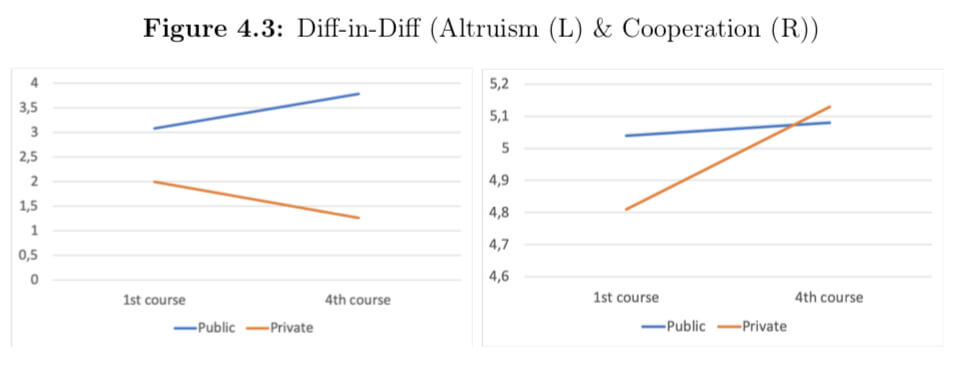Editor’s note: This post is part of a series showcasing BSE master projects. The project is a required component of all Master’s programs at the Barcelona School of Economics.
Abstract
This paper aims to find a pattern in the evolution of altruistic and cooperative behaviour whilst distinguishing across different types of schools in Spain. In specific, we design a controlled laboratory experiment by running the standard dictator game and a public goods game in a public and private (“concertada”) high school. Using a sample of 180 students, we compare 12 and 16 year old children to distinguish the evolutionary pattern and test if there is a significant change by the type of schooling system. Alongside, we control for variants such as parental wealth status, religious views and ethical opinions. Interestingly, evidence from our data highlights that altruism levels rise throughout public school education whilst it falls in private schools. On the contrary, cooperation levels are relatively stable in public schools but rise in private schools. The results from this paper can be exploited to understand how education may influence selfish and individualistic behaviour in our society.
Key results

Our results show that at the initial stage, i.e. for the first year students, the level of altruism is higher in public schools and this prevails throughout the students’ education in a public school. On the other hand, we observe an opposite trend for students attending private school, as over the four years of education, the average level of altruism declines. In regards to cooperation, we find some surprising results. Although students attending a public school initially show higher levels of cooperation than private schools, over the course of their education, this gap is not only reduced but it is also surpassed by the private school. Our results are in line with previous research which state that females are more likely to donate and cooperate than males but contradict the popular view in literature that income has a positive correlation with both dependent variables.
Authors: Shaily Bahuguna, Diego Loras Gimeno, Davina Heer, Manuel E. Lago, and Chiara Toietta

